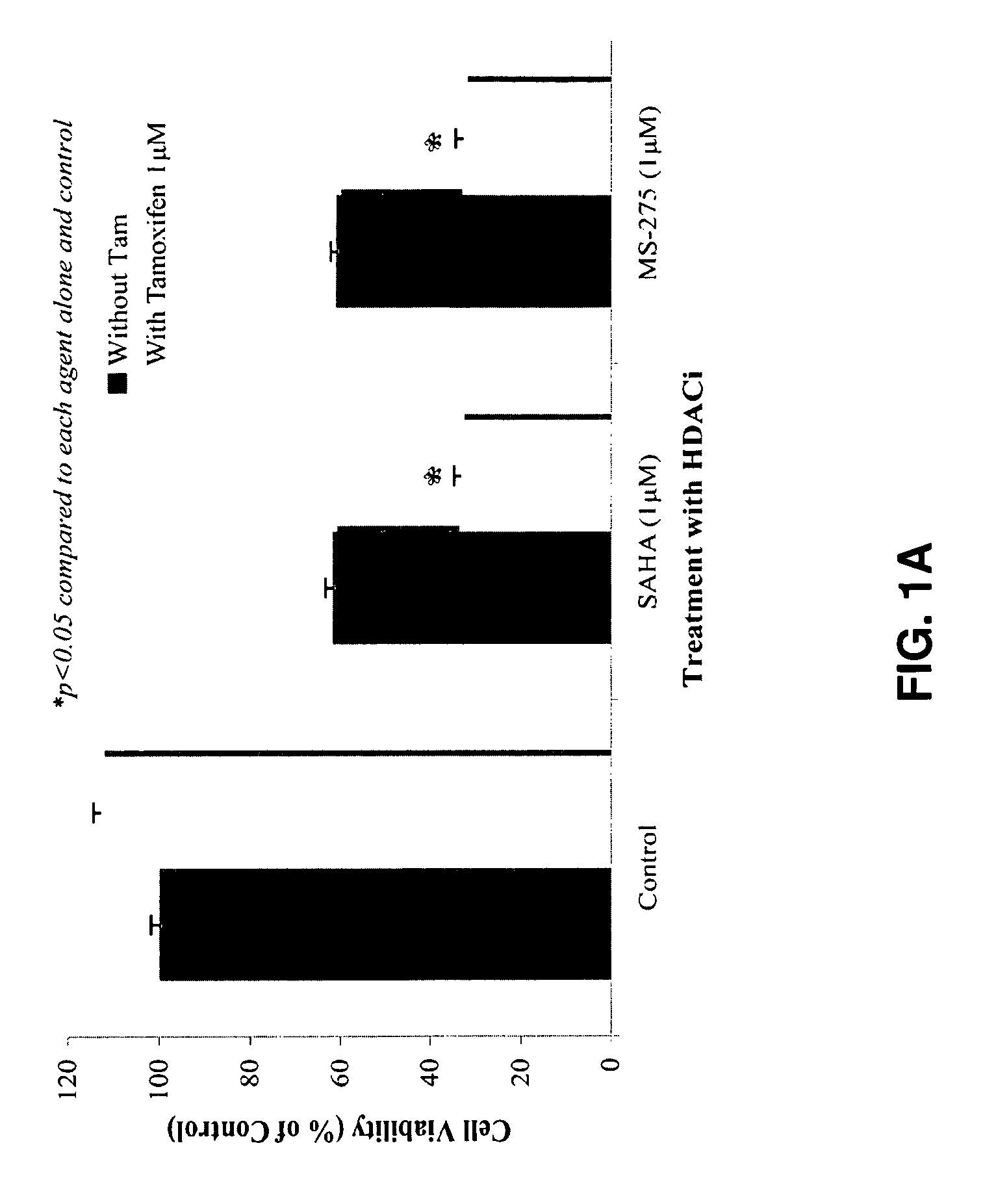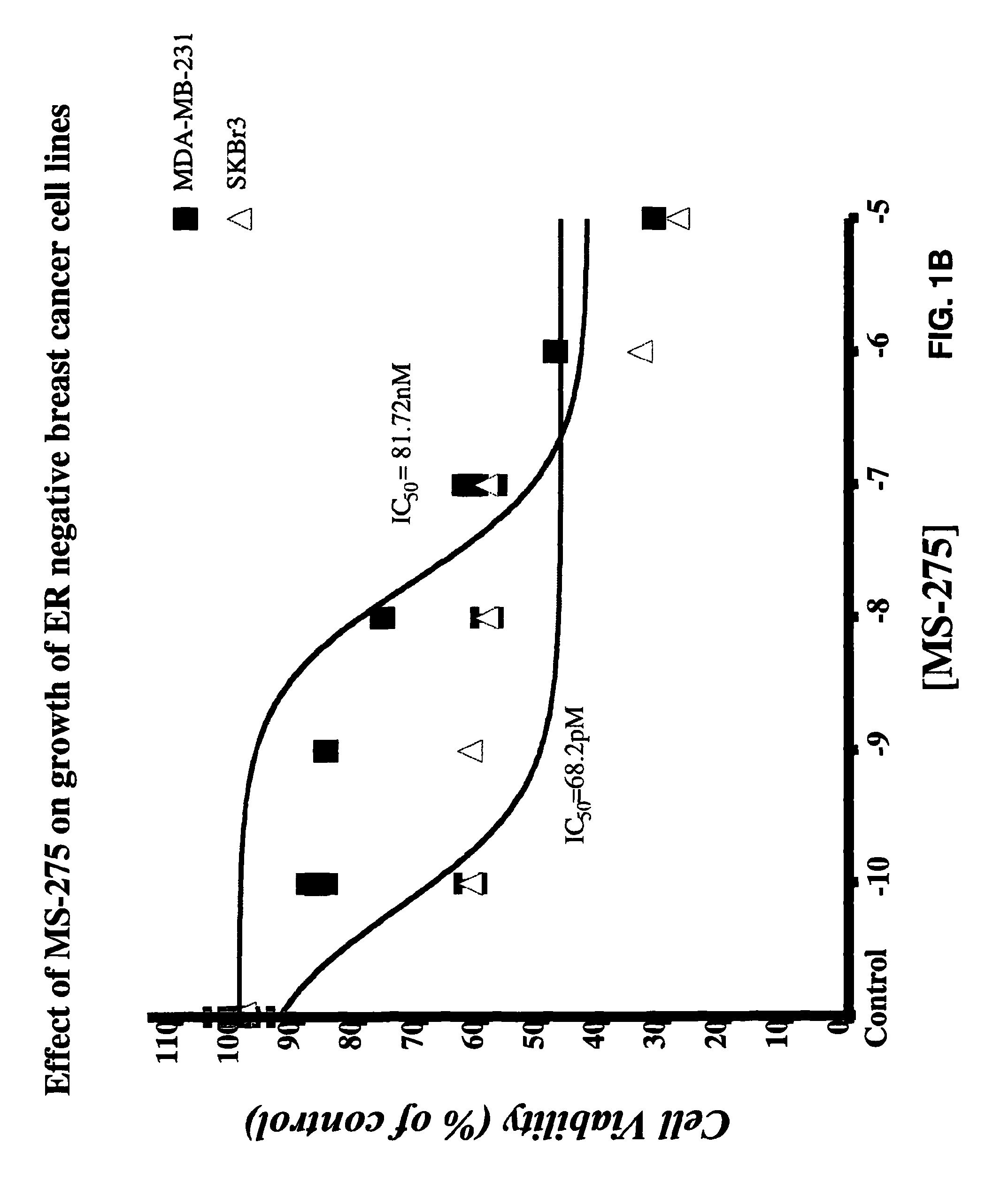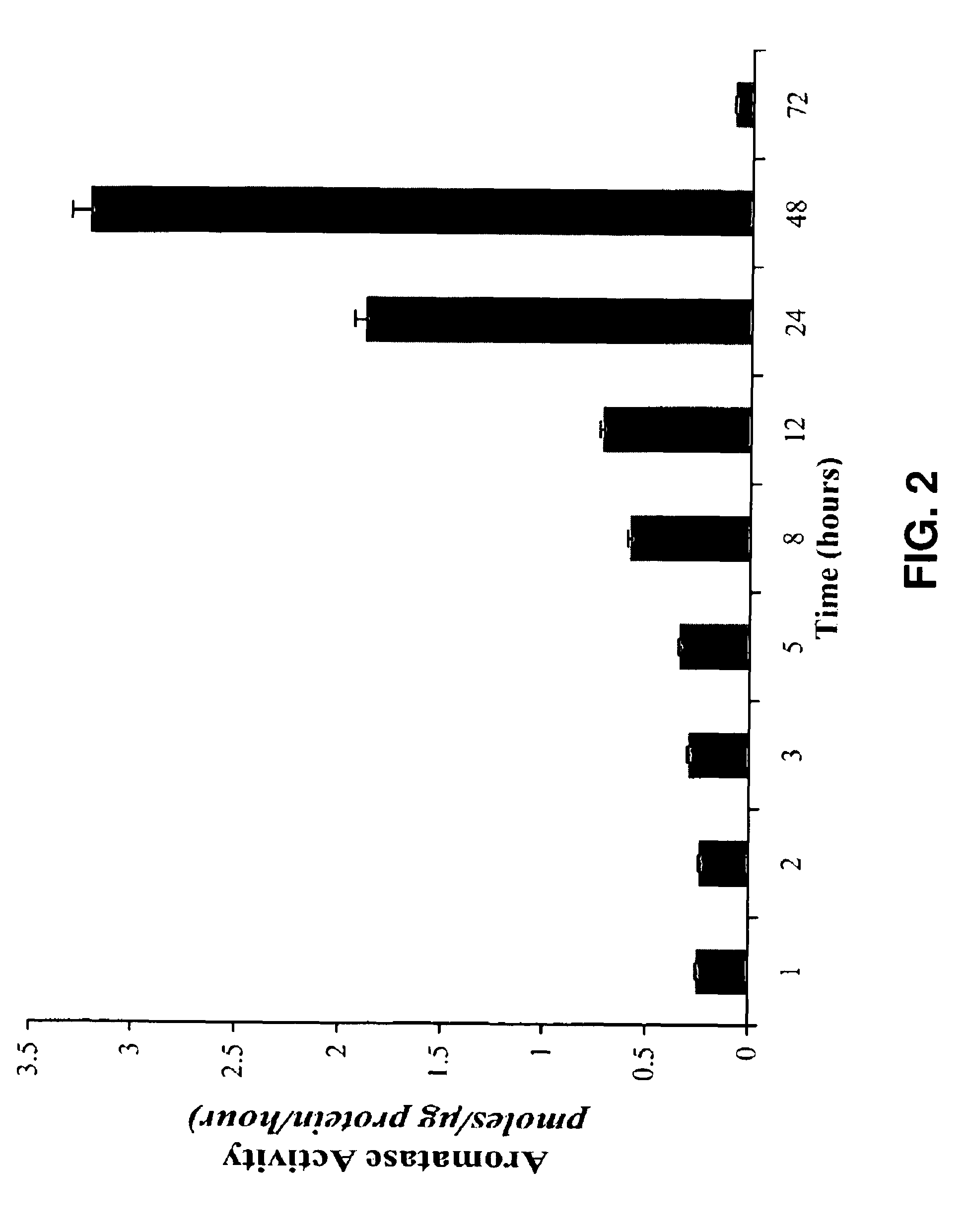HDAC inhibitors and hormone targeted drugs for the treatment of cancer
a technology of hdac inhibitors and targeted drugs, applied in the field of medicine and oncology, can solve the problems of refractory breast cancer, and achieve the effects of increasing the expression of estrogen receptors, increasing aromatase expression and/or activity, and increasing the expression of androgen receptors
- Summary
- Abstract
- Description
- Claims
- Application Information
AI Technical Summary
Benefits of technology
Problems solved by technology
Method used
Image
Examples
example 1
Molecular Effects of HDACI on ERA Signaling in ER− Breast Cancer Cells
Methods:
Cell Viability Assessment Using MTT Assay:
[0179]MTT assay was performed to measure viability of breast cancer cells after treatment with various test compounds (Sabnis et al. 2005). IC50 and IC25 values for inhibitors is calculated from the linear regression line of the plot of percentage inhibition versus log inhibitor concentration. These IC50 values is used for combination or sequencing studies. The effect of combination or sequence of treatment is determined at IC25 of each agent.
Western Immunoblotting for Expression of ERα and Downstream Targets:
[0180]The protein extracts from breast cancer (MDA-MB-231 and SKBr3) cells were subjected to western immunoblotting (Sabnis et al. 2005) to measure protein expression of ERα following HDACi treatment. Protein expression of other ER inducible genes such as c-Myc and PgR can also be examined.
Binding Studies:
[0181]To confirm affinity of ERα for E2 and AE tamoxife...
example 2
Effects on Aromatase Activity
[0187]The aromatase activity assay was described by Yue et al. (1997). The expression and activation of aromatase was seen after treatment with HDACi. The basal level of aromatase activity in MDA-MB-231 cells was found to be 3.02 pmoles / μg of protein / hour. When treated with MS-275 (1M) for 24 hours and then incubated with 1β-3H-Androstenedione for 18 hours, the aromatase activity was found to be 15.193 pmoles / μg of protein / hour. This up-regulation of aromatase activity was dose dependent. A similar increase in aromatase activity was observed after pre-treatment with butyric acid. Also, a 24 hour treatment of MDA-MB-231 cells with MS-275 (10 nM), SAHA (10 nM) and BA (1 μM) up-regulated the expression of aromatase by 2.6, 1.77 and 1.2 fold respectively.
example 3
In Vivo Dose Response Effects of HDACI
[0188]Antitumor efficacies of each HDACi are tested in female mice bearing MDA-MB-231 and SKBr3 tumors using in vivo mouse xenograft model. The cell lines used for this study are estrogen independent ER-cell lines. SKBr3 cells. These cells are used for studies with AIs, since these cells have endogenous high levels of aromatase, which is inhibited by AIs. This model simulates advanced and ER-, hormone refractory breast cancer, which is usually associated with mortality of the disease. The xenograft studies are performed as described by Long et al. 2004; Takabatake et al. 2007. Each agent is given at 5 different doses po and sc and effect on the growth of tumors will be examined. During the course of the experiment, tumors are measured weekly with calipers and tumor volume calculated using the formula [[4 / 3πr12r2]] (4 / 3)πr12r2(r1≦r2). After completion of the treatment the animals are euthanized, tumors and uteri are weighed and collected for furt...
PUM
| Property | Measurement | Unit |
|---|---|---|
| volume | aaaaa | aaaaa |
| volume | aaaaa | aaaaa |
| volume | aaaaa | aaaaa |
Abstract
Description
Claims
Application Information
 Login to View More
Login to View More - R&D
- Intellectual Property
- Life Sciences
- Materials
- Tech Scout
- Unparalleled Data Quality
- Higher Quality Content
- 60% Fewer Hallucinations
Browse by: Latest US Patents, China's latest patents, Technical Efficacy Thesaurus, Application Domain, Technology Topic, Popular Technical Reports.
© 2025 PatSnap. All rights reserved.Legal|Privacy policy|Modern Slavery Act Transparency Statement|Sitemap|About US| Contact US: help@patsnap.com



